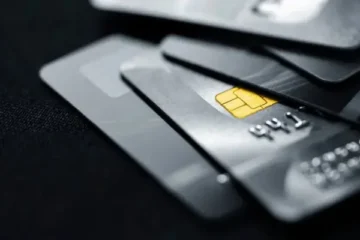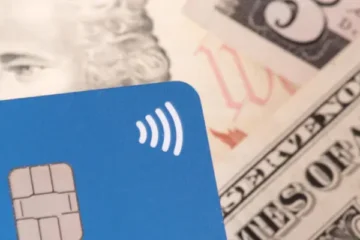Crypto Loans and Their Risks
If you’re into crypto and have thought about taking out a loan using your coins as collateral… hold up. This article’s for you.
Advertisement
On paper, it sounds great: you put up your Bitcoin or Ethereum as collateral, get a cash loan, and you don’t even have to sell anything. But just like most things in crypto, there are risks—and big ones. So before you start borrowing against your crypto, let’s break down how it actually works.
Advertisement
What Are Crypto Loans?
Crypto loans are nothing like the traditional loans you get from a bank. The game here is totally different. You put up your crypto as collateral and get a loan in stablecoin (like USDT or USDC) or even in real cash, depending on the platform.
It’s kinda like pawning your car, but instead of a car, you’re using Bitcoin. The cool part? You don’t have to sell your crypto—which is great if you think the price will go up.
Advertisement
How Do Crypto Loans Work?

At first glance, crypto loans sound pretty straightforward—and they are. But the small print? That’s where it gets real. If you don’t understand how things work under the hood, you could end up losing more than you bargained for.
So let’s break it down in plain English. Here’s how the process usually goes, step by step:
- Pick a platform: You’ll choose between centralized ones (like Nexo or Binance) or decentralized ones (like Aave or Compound).
- Deposit your crypto as collateral: For example, you put in $10,000 worth of ETH.
- Get your loan: Based on your crypto’s value, the platform lends you a percentage of that—usually around 50%.
- Pay it back with interest: Like any loan, there are interest rates and sometimes fees involved.
- Get your crypto back: Once everything’s paid off, your collateral is returned to you.
Now here’s the catch: if the value of your crypto drops too far, the platform can liquidate it automatically to cover the loan. No warning, no second chance. That’s why understanding the full process—especially the risks—is key before you get started.
Top Crypto Loan Platforms
If you’re thinking about trying out a crypto loan, the first big decision is choosing where to do it. And trust me—not all platforms are created equal.
Some give you way more flexibility, while others offer stronger security or better rates. It really depends on what you need and how much control you want over your crypto.
Here are some of the most well-known and trusted options out there:
- Aave: A decentralized (DeFi) platform that runs on smart contracts. Super popular for folks who want full control and no middlemen.
- Compound: Another DeFi choice that’s user-friendly and transparent. It’s known for solid interest rates and ease of use.
- Nexo: A centralized platform that’s beginner-friendly, fast, and comes with actual customer support—which can be a lifesaver.
- Binance Loans: If you already use Binance to trade, this built-in loan feature makes it easy to borrow without leaving the platform.
- MakerDAO: Works with DAI, a stablecoin, and doesn’t rely on any company to handle your loan—it’s fully decentralized.
Don’t just pick one because it sounds familiar. Dig a little. Check if the platform offers insurance, read reviews, and make sure it’s not some sketchy operation. In crypto, reputation is everything.
Are Crypto Loans Worth It?
Honestly? It depends on your situation and your risk tolerance. If you’re sitting on some crypto and don’t want to sell it—maybe because you think the price is gonna shoot up—then taking out a loan against it could make sense. It’s like unlocking cash without saying goodbye to your coins.
Here’s why some folks go for it:
- No credit check: Your FICO score doesn’t matter here. No paperwork, no waiting for bank approvals.
- Quick access to funds: In many cases, you get the money in minutes—straight to your wallet.
- Hold onto your gains: If Bitcoin or Ethereum skyrockets while your collateral is locked, you still get to enjoy the upside.
But let’s not sugarcoat it. Crypto loans aren’t magic money. The risks are real—and they’ve already burned a lot of people who didn’t know what they were getting into. So before you jump, make sure the potential reward actually matches the risk you’re taking.
The Risks of Crypto Loans
Let’s be honest—getting a crypto loan might sound like a smart move, but it comes with some serious risks that can hit you hard if you’re not careful.
This isn’t like borrowing a few bucks from a friend. In the crypto world, things can go south fast, and when they do, you could lose way more than you think.
Before you jump in, here’s a breakdown of what could go wrong—and why you need to be 100% alert when playing with this kind of fire.
- Volatility: Crypto goes up and down fast. That affects your loan health.
- Forced liquidation: If your crypto’s value drops past a certain point, they’ll sell it—no warning.
- Smart contract bugs or hacks: Especially in DeFi. If something breaks, your funds could be gone.
- Platforms going under: Some companies have already shut down and disappeared with people’s money.
- Regulatory issues: Governments are still figuring this stuff out.
So yeah, if you’re gonna get into this, you better be wide awake. It’s like skateboarding without pads—fun, but a wipeout can hurt.
What Is Loan-to-Value (LTV) and Why It Matters
LTV stands for “Loan-to-Value,” and it’s basically the ratio of your loan amount to the value of your collateral.
For example:
If you post $10,000 in Bitcoin as collateral and borrow $5,000, your LTV is 50%. But if Bitcoin drops and your collateral is worth only $6,000 now, your LTV goes up. If it hits the limit (usually 70%–80%), your crypto could get liquidated.
In short: lower LTV = safer loan. Most platforms let you choose your LTV, so think wisely before setting it.
Decentralized vs. Centralized Loans: What’s the Difference?
When it comes to crypto loans, you’ve got two main routes: centralized (CeFi) and decentralized (DeFi). Think of it like this—CeFi is more like dealing with a regular company, while DeFi is like trusting a robot that runs everything by code.
Both have pros and cons, and choosing the right one depends on how much control and responsibility you want.
Here’s the breakdown:
Centralized Platforms (CeFi)
These work more like a traditional bank—but with crypto:
- You’re trusting a company (like Nexo or Binance) to hold your crypto.
- They handle the loan process for you.
- You usually get customer support, mobile apps, and a smoother experience.
- They can freeze or restrict your account if needed.
Great for beginners or folks who want a hands-off experience.
Decentralized Platforms (DeFi)
These are fully automated and run by smart contracts—no middleman:
- Your loan is handled by code on the blockchain.
- There’s no one to call if something goes wrong.
- Full transparency—everything’s visible on the network.
- You manage your wallet, collateral, and transactions directly.
Perfect if you want full control and are comfortable managing your own assets.
Bottom line?
If you’re just getting started, CeFi might be the safer bet. But if you know your way around crypto and prefer to stay independent, DeFi gives you the freedom to do things your way—just with more responsibility on your shoulders.
Which Cryptos Can Be Used as Collateral?
You can’t just use any random coin as collateral for a crypto loan. Platforms are picky—and for good reason. They want to make sure your collateral is something stable enough (well, as stable as crypto gets) and easy to sell if things go sideways.
Here are the types of crypto most platforms accept:
- Bitcoin (BTC): The big one. Almost every platform accepts it.
- Ethereum (ETH): Also widely accepted and often used because of its strong network and liquidity.
- Stablecoins (USDT, USDC, DAI): These are tied to the U.S. dollar and can be used both as collateral and sometimes as the loan currency itself.
- Other top-tier coins: Stuff like BNB, SOL, or AVAX may be allowed, depending on the platform’s risk tolerance.
Now, if you’re holding lesser-known altcoins or tokens that barely move in volume, don’t count on using them. Even if a platform does accept them, they’ll likely give you a lower Loan-to-Value (LTV) ratio—which means you’ll have to lock up more of your crypto to borrow less money.
So, before you jump in, double-check which coins are accepted and what kind of LTV you’ll get. It makes a big difference.
What Happens if the Value of Your Crypto Drops?
Here’s the scary part.
If the price of your crypto drops, your LTV increases. When it crosses the platform’s limit, they’ll automatically sell your crypto to recover the loan.
This is called a “margin call,” but you might not even get a heads-up. It’s automated.
That’s why people recommend keeping your LTV low—like around 40%–50%—just to be safe.
How to Avoid Problems When Taking Out a Crypto Loan
Getting a crypto loan might seem easy—but staying out of trouble takes a little more effort. The truth is, a lot of people rush into this thinking it’s quick money, only to get hit with fees, liquidations, or even platform failures.
If you want to borrow smart and avoid the usual mistakes, you need to be prepared from the start. It’s not about being lucky—it’s about being informed.
Here’s a simple checklist to help you stay safe while getting the most out of your crypto loan:
- Stick to well-known platforms with strong reputations.
- Don’t put all your crypto in. Keep a reserve.
- Aim for a low LTV (40–50%).
- Set up price alerts for your collateral.
- Sead the terms and conditions carefully.
- If your crypto dips, add more collateral quickly.
Don’t let the hype suck you in. Learn before you leap.
What Are the Alternatives to Crypto Loans?
Not sure if a crypto loan is the right move for you? That’s totally fine. Honestly, this type of borrowing isn’t for everyone—and it comes with way more risk than most people realize. The good news is: you’ve got options.
Here are some safer and more traditional alternatives to consider:
- Personal loans from banks or credit unions: These usually come with fixed interest rates, predictable payments, and legal protections. Yeah, they check your credit—but sometimes that’s worth the peace of mind.
- Secured credit cards: If you’re trying to build or rebuild credit, this is a solid choice. You put down a deposit and get a card with a limit tied to that amount.
- Traditional lines of credit: If you own a car or home, you might qualify for a secured line of credit at a decent rate—way more stable than betting on the crypto market.
- Side income streams: Sometimes, making extra cash is a better option than borrowing. Gig jobs like Uber, DoorDash, Instacart, or freelance work online can bring in quick money without putting your assets at risk.
Bottom line? If crypto lending feels too risky or confusing right now, it’s totally okay to take a more familiar route. The goal is to solve your financial need—not create a bigger one.
Real-Life Problems People Faced with Crypto Loans
Crypto loans might sound like a smart financial move—but for a lot of people, they turned into a nightmare. This isn’t just theory or “what if” talk. These things have actually happened, and the fallout was brutal.
From major platforms shutting down to users getting wiped out overnight, the crypto lending world has already delivered some harsh lessons. Let’s look at a few real-world cases that prove just how risky this game can be:
- Celsius Network: Froze accounts and collapsed in 2022.
- Anchor Protocol: Offered high yields, then crashed with the Terra/Luna meltdown.
- Mass liquidations: During Bitcoin price drops, thousands of users lost their collateral instantly.
These stories show the danger is real. You can win big—but you can lose everything too.
Are Crypto Loans Legal?
Here’s where things get a little tricky. In the U.S., crypto loans live in a legal gray zone. The rules aren’t fully clear yet, and a lot depends on how regulators decide to treat these platforms.
Right now, here’s what you need to know:
- The SEC and other agencies are starting to crack down and set clearer rules for crypto lending.
- Some platforms need licenses to legally operate—others are still figuring it out.
- Most crypto loans aren’t protected by the government like traditional bank accounts (no FDIC insurance here).
- And if something goes wrong? You’re basically on your own.
That’s why it’s crucial to double-check if the platform you’re using is legal and registered in your state. Because once your money’s in—getting it back might not be so easy.
Is Using Crypto as Collateral Still Worth It in 2025?
For some folks, absolutely. But it’s not for everyone.
If you already hold crypto, understand the risks, and need cash without selling your assets—it can be a smart move. But if you’re just getting started or can’t afford the risk, it’s better to stay out.
The crypto market in 2025 is more mature, but the risks haven’t disappeared. The only difference is that people are now more aware.
If you’re into crypto, have some solid reserves, and know what you’re doing—crypto loans might fit your game plan. But if you’re scraping by or don’t know much about this stuff, play it safe.
At the end of the day, it’s all about your risk tolerance.
Just don’t treat this like easy money—because it’s not. Take your time, learn the ropes, and if possible, talk to someone who’s done it before.
In crypto, knowledge is just as valuable as Bitcoin itself.





